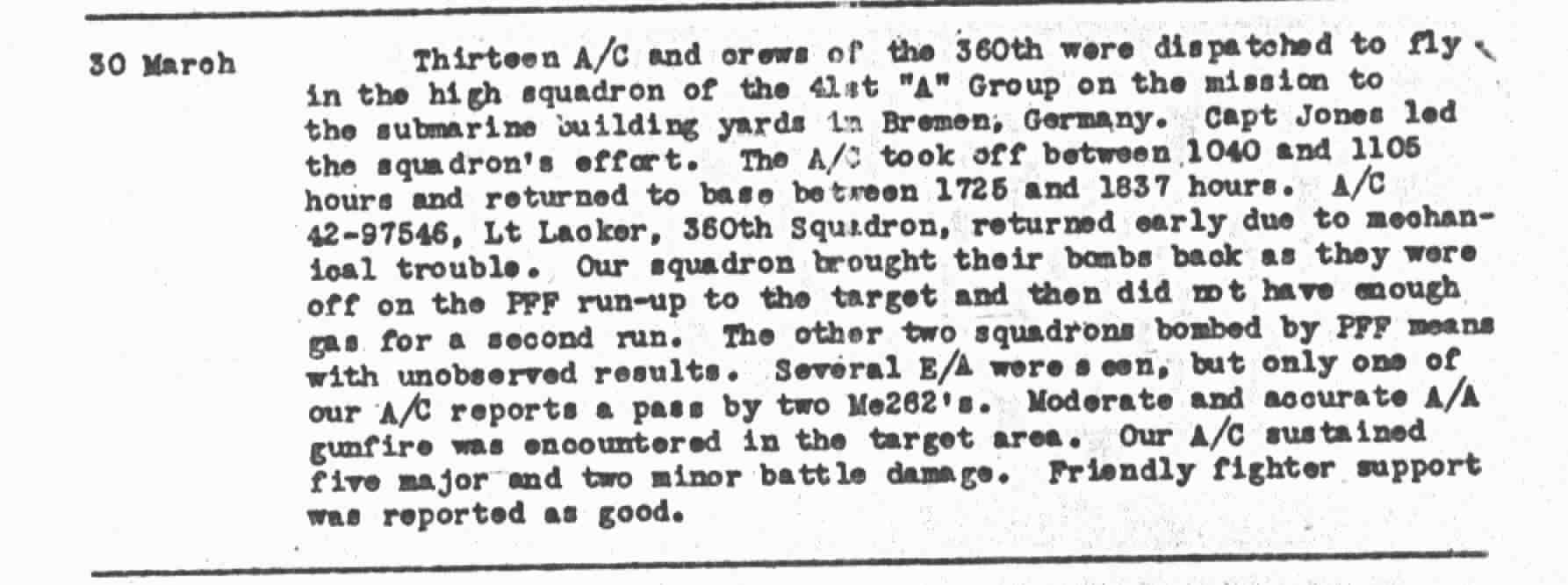
360th BS Narrative.

This was an unusual mission for the 360th BS, as the
squadron
brought back it's bombs. Not something that they would want to do
after flying a dangerous mission. However, the 8th AF was proud of the
fact that they used accurate bombing to attack military targets with
minimal
damage to non-military targets, so if a military target couldn't be
hit,
the bombs were brought back to base.
Captain Jones, led the high squadron on the mission, flying AC# 44-8552. The crew members on this ship were:
P Jones, William E Capt
CP Tyler, Samuel L 2lt
N Stewart, James L 1lt
B Mishtal, Theodore W 1lt
MN Gibson, Cater M 1lt
R Ciezadlo, Eugene F s/sgt
R Lillis, Joseph Pvt *
TG Wotanis, Leo F sgt
For this mission, we have the 41st CBW mission summary obtained at the NARA archives in College Park, Md. This narrative is more descriptive than the squadron narrative above.
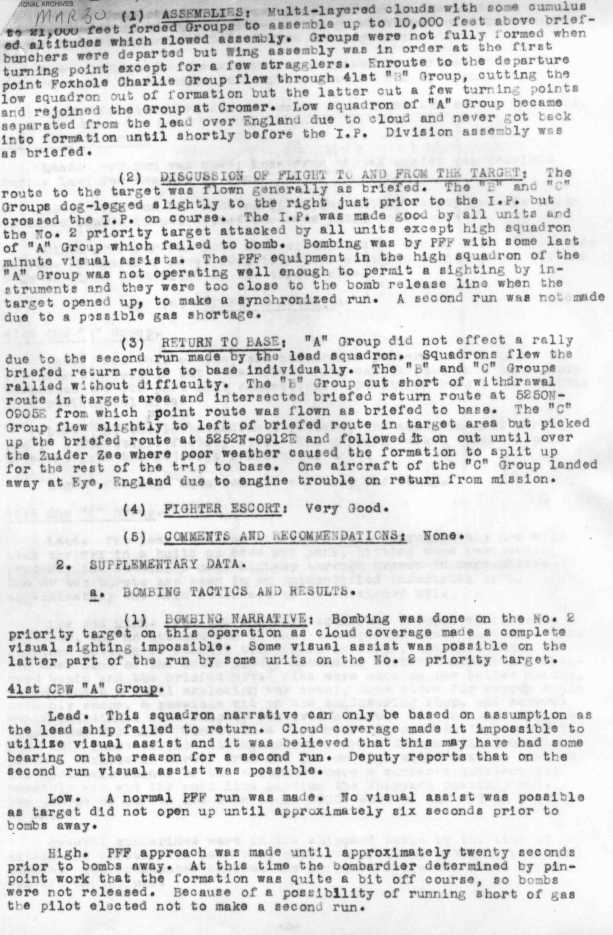
One of the reasons for eventually running short of fuel, was
difficulties
encountered in assembly, such as needing to go to a higher than planned
altitude, and running into a squadron of planes from another group
going
the wrong way.
The Captains of Aircraft mission map for this mission is shown below:
As mentioned above, and in the narratives, bringing back the bombs
was
not usual or desirable.
This mission MAP has a few comments relating to this incident. The
first, was shortly after taking off, there was a comment
stating "mickey very weak". Mickey is the name for the ground
sensing radar used to locate targets that are cloud covered,
sometimes called PFF, or pathfinder radar. The primary target
for this mission was the submarine building yards in Bremmen, by visual
means. The secondary target was the same target via H2X
radar.
Another notation on the map indicated 76 MPH winds near the target.
Then
a comment stating "last sec the bombadier said that mickey run was 3
miles
left ...too late for vis assist....not enough gas for second
run".
Also another comment "scouter advised me to take the bombs
home".
"Scouter" refers to an aircraft sent out on it's own, ahead to the
target
to evaluate weather conditions. This aircraft usually had higher
ranking officers, like Lt Col, who served to make command decisions
like
this. Vis assist refers to using the visual Norden bomsight to
fine
tune the bomb release.
Other notes on the mission map were "11 ships in
formation,
one way back", "Statton out of formation", "K ship hydralic
system shot out" , "Q ship instruments shot out", and "5 ships dropped
bombs at A-able point in North Sea". Landing with
bombs on board was optional. Some pilots didn't feel comfortable
landing with the extra weight and danger of a full load of
bombs, so they dropped them in the ocean before landing if they
couldn't
drop them on a target. Bombs were generally not
just dropped randomly over enemy territory, as they tried to hit
military
or industrial targets rather than civilian, which is why
bombs were sometimes brought back,or sometimes dropped at sea rather
than just dropping them. In this case, some of the ships dropped
bombs at sea, probably because damage to 7 of the planes made landing
more
problematic.
There was also a mission track map copied
at NARA in Md. This became somewhat blurred due to smudging of
the
xerox copy, but it is shown below:
This map shows the actual routes taken for the high and low
squadrons.
The route designated _._._. which returns slightly to the north of the
planned route is that of the 360th BS. My assumption is that this
detour was taken in order for the 5 ships to drop their bombs at
sea.
It is somewhat interesting that the 360th BS was the "high" squadron on
this mission, which was to the right and above the other two squadrons
in the bomb group, and yet the 360th bombadier reported that when the
cloud
opening appeared, that they were 3 miles to the left of the target,
which
would suggest that the other 2 squadrons were even further left of the
target (but didn't know). The lead squadron didn't bomb on the
first
run, but made a second run, which was perhaps an unfortunate choice,
since
the lead ship of the lead squadron, co-piloted by group air commander
Major
Shumake was lost due to damage received from flak over the target
area.
Major Shumake became a POW.
The above map also shows a route shortly after the initial
bomb run, that suggests an intention to make a second run, prior to
making
the decision to return due to lack of fuel and several damaged ships in
the squadron.
The loading document from the 360thBS microfilm records is shown
below:
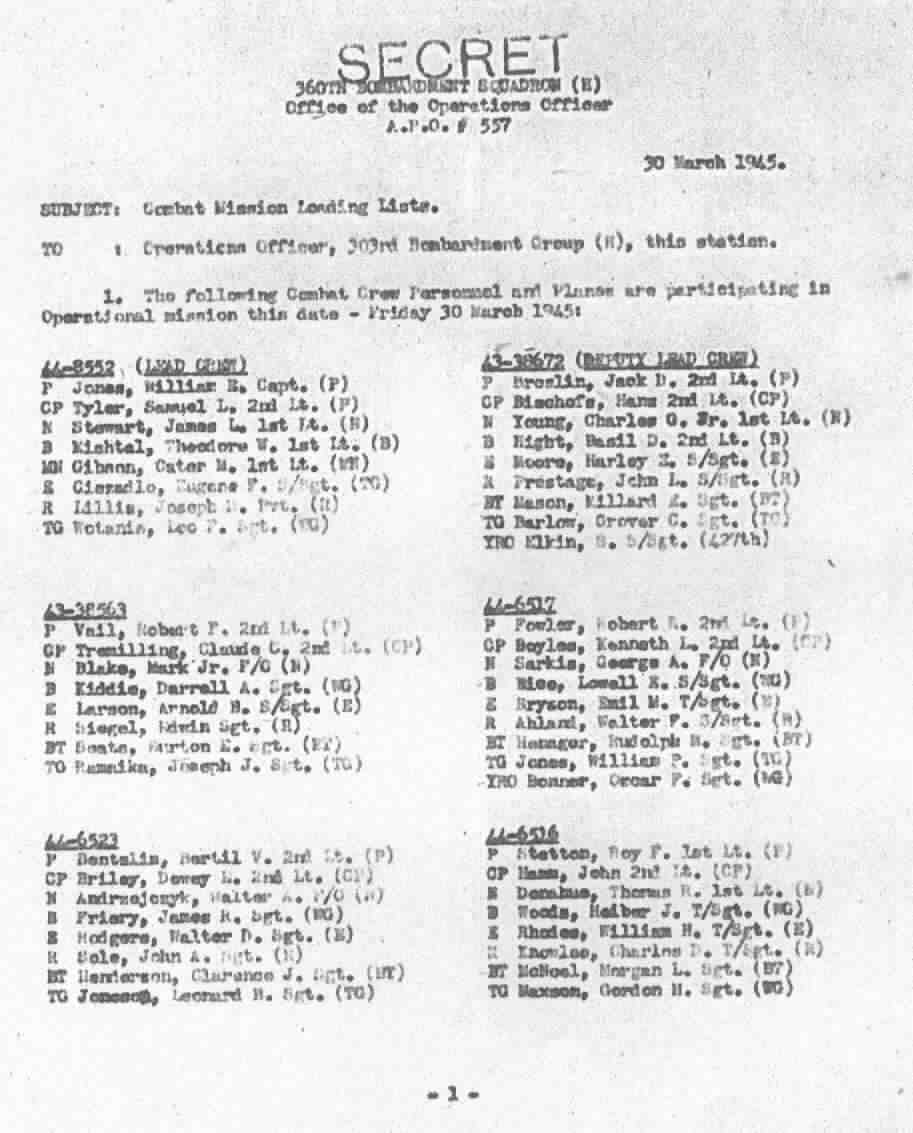
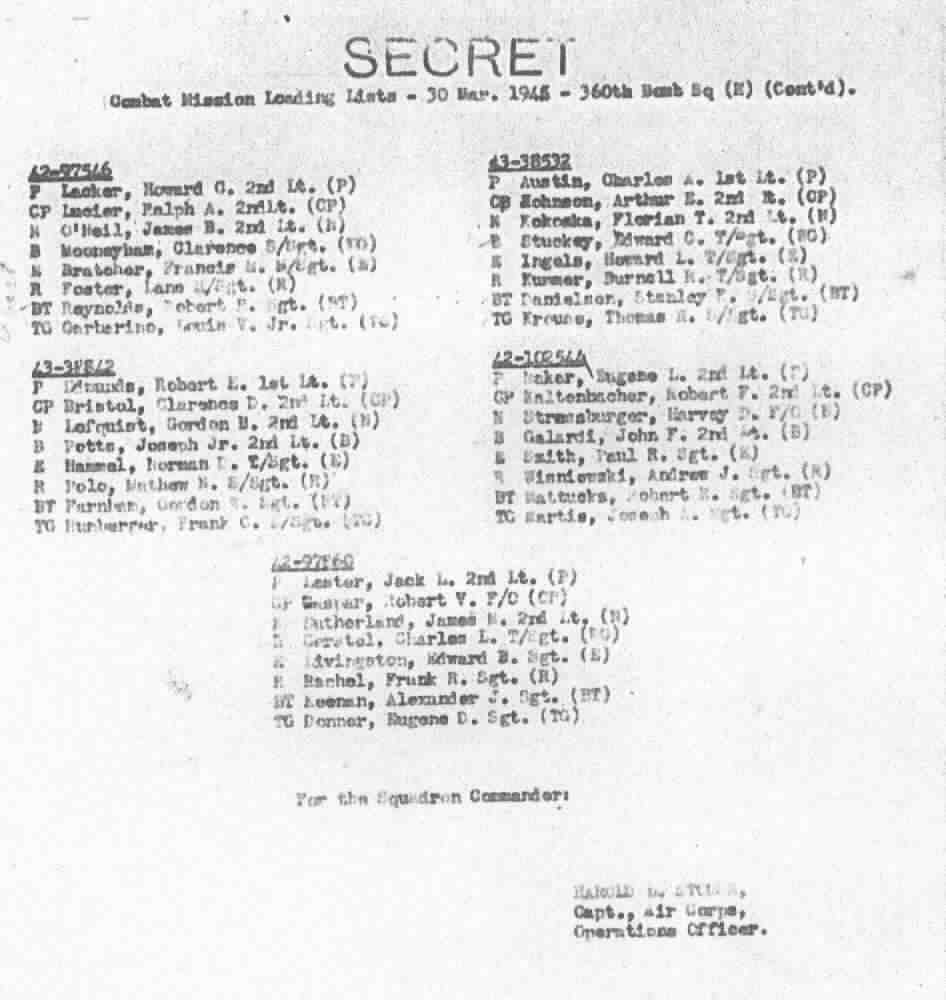
Some notes on the mission saved by Capt Jones:
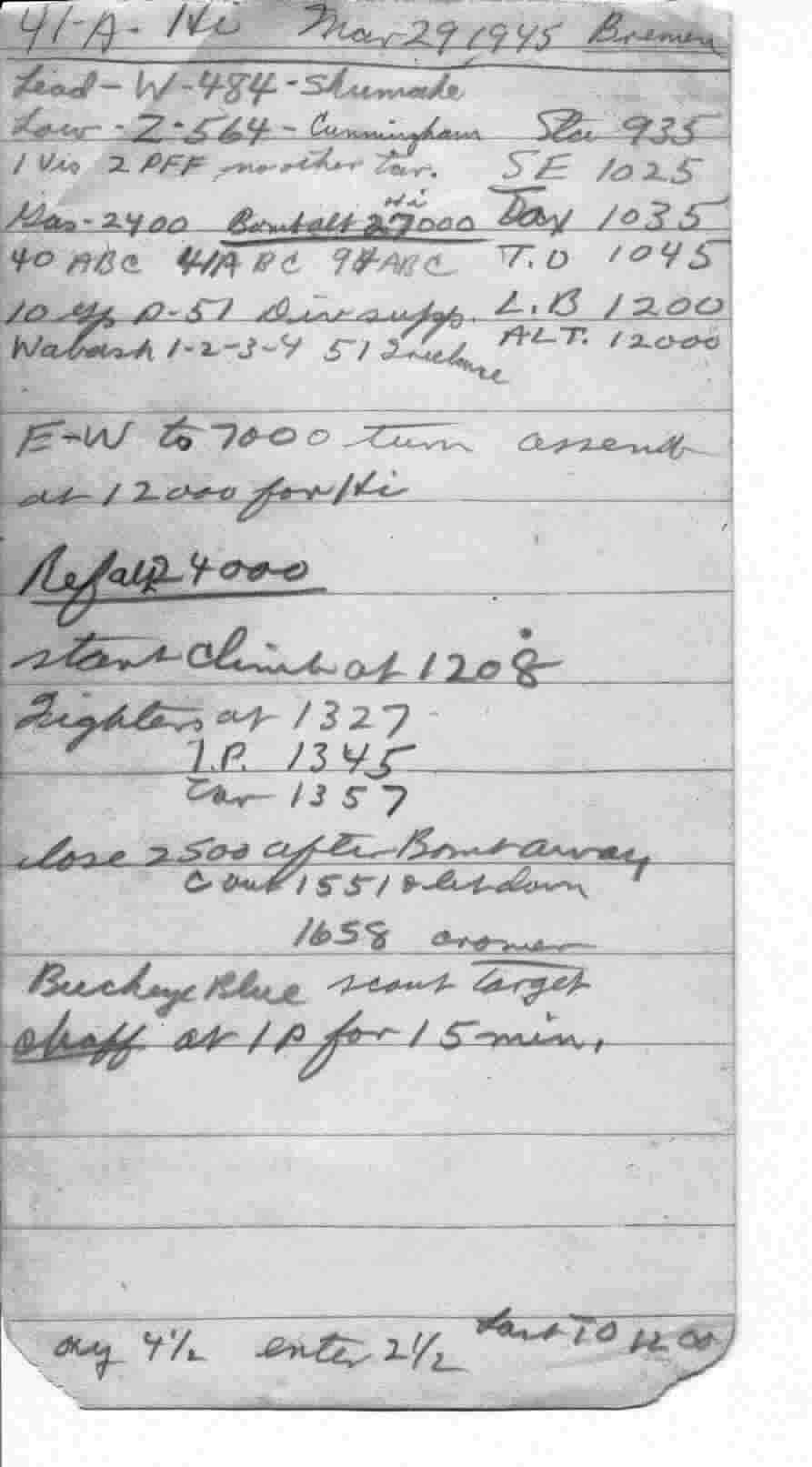
* One additional item of interest. The radio operator on
this mission, had recently flown his 100th mission (about 2/3 of these
being in the Pacific), and apparently must have celebrated too
much.
He was picked up by MPs and charged with drunk&disorderly in
uniform,
and busted from T/Sgt down to a Pvt. In a later mission, he was
upgraded
to PFC, and then following his final mission he was re-assigned to his
previous T/Sgt rank. Sgt Lillis was written up in
Stars&Stripes
after completing his 100th mission, and his picture
was taken on another mission with Captain Jones in 44-8552.
Sgt Lillis was apparently one of the most respected radio operators in
the squadron, as he flew mainly on lead crews, and was allowed to
continue
flying aafter being reduced in rank.